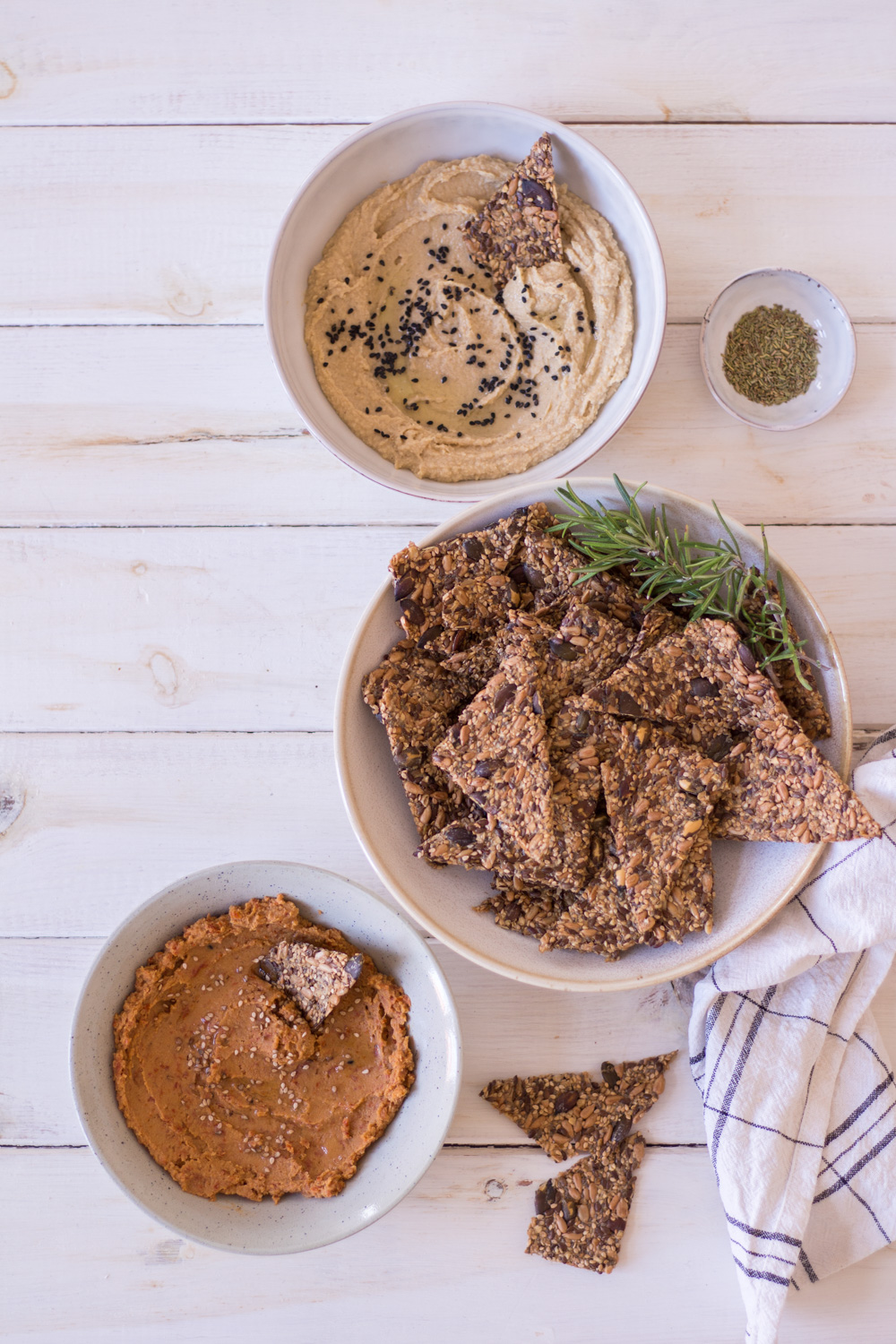
*Webung/ Ad. This post is sponsored by Alnavit. This post is also available in German.
One of the most popular recipes from my cookbook is the recipe for gluten-free seed crackers. The recipe is so simple, yet all of the German readers seem to love it as I keep seeing it in tagged Instagram-posts. Therefore, I decided to share this recipe favorite also with my international audience today. Also, I just came back from a trip down memory lane in the US, so I’m feeling especially jolly these days.
One of the most frequently asked questions about my book is why I put (gluten-free) in paranthesis in front of some of the ingredients. Since my sister has celiac disease, the worst form of gluten intolerance, the entire book is gluten-free. But it’s more “gluten-free” by accident, because I do not use simply use gluten-free substitutes, I’ve only used foods that are naturally gluten-free. There are some foods that can easily be contaminated with gluten, such as yeast or dried vegetable stock, therefore I like adding the addition “gluten-free”, so people with a gluten-intolerance or celiac disease are sure to check the label before they buy an ingredient. Also, there is a huge confusion about oats and gluten. I always put “certified gluten-free” when referring to oats, too, and that’s also one of the most frequently asked question on the blog.
 Are oats gluten-free?
Are oats gluten-free?
Oats are naturally gluten-free because they are not botanically related to wheat. However, oats are often grown in fields where wheat, spelt or other gluten-containing foods were previously grown. There are traces of gluten on the harvestors or in the sacks or trucks in which the oats are transported. In addition, oats are mostly processed in factories that also process gluten-containing grains. Therefore, oats must be grown in strictly gluten-free fields and flocced in a gluten-free mill to avoid traces of gluten. Anyone who has ever been to a mill knows that traces of gluten in a normal flour mill cannot be avoided.
Who should use gluten-free oats?
People with intolerances or celiac disease should always buy gluten-free oats to avoid irritation of the intestinal wall. Most people with celiac disease already notice the smallest traces of gluten in their food, which is why gluten-free oats are a literal life-safer to them. I often get asked where I buy my gluten-free oats from, and I really like my partner Alnavit. Since I personally do not have a gluten-intolerance, I also eat regular oats, but my sister absolutely loves Alnavit* and all its gluten-free choices.
Alnavit is a close partner of mine, and they belong to the Alnatura family. I always call them Alnatura’s partner for people with intolerances. Nearly all of their products are gluten-free. But even for people like me who do not live a gluten-free life, the Alnavit products are great, because most of them are whole-grain and contain a minimal amount of ingredients. I live for their buckwheat noodles and the gluten-free whole-grain penne. Not because they are gluten-free, but because they have the highest organic quality that tastes good.
For this recipe, all you will need are your choice of seeds, some sea salt and water. You can go crazy with all of the seeds, but you WILL need the chia seeds, because they work as a binding ingredient in this dish. You can sway any other seed for another, but the chia seeds are definitely needed. If you’re not allergic to gluten, then you can use any kind of oats, but if you do have an intolerance, be sure to use certified gluten-free oats.
And don’t forget to add that rosemary or any other dried spice of your choice. It makes the crackers extra yummy.
Enjoy!
- 70 g of sunflower seeds
- 60 g of gluten-free organic oats from Alnavit
- 40 g of sesame seeds
- 40 g of flaxseeds
- 30 g of pumpkin seeds
- 15 g of chia seeds
- ½ teaspoon of sea salt
- 250 ml of boiling water
- some wholegrain rice flour or (gluten-free) all purpose-flour of your choice
- 1 teaspoon of dried rosemary (delicious !!)
- Preheat the oven to 160 ° C circulating air (180 ° C top and bottom heat). Mix all dry ingredients in a mixing bowl. Pour in the hot water and mix well with a wooden spoon. Let it swell for 15 minutes.
- Spread a baking tray with parchment paper, sprinkle with wholegrain rice flour and thinly spread the batter with a dampened spatula on the sheet. The thinner the crispier the crackers will be.
- Bake the crackers in the pre-heated oven for 10 minutes, take the tray out of the oven and cut the batter into triangles or rectangles with a sharp knife or pizza roller.
- Bake for another 40-50 minutes (depending on the thickness of the dough). Remove and allow to cool. Airtight, the crackers keep for up to two weeks.
Enjoy!
*Werbung / Ad. This recipe is sponsored by Alnavit. Thank you for supporting the brands that keep me dancing through my kitchen all day long.
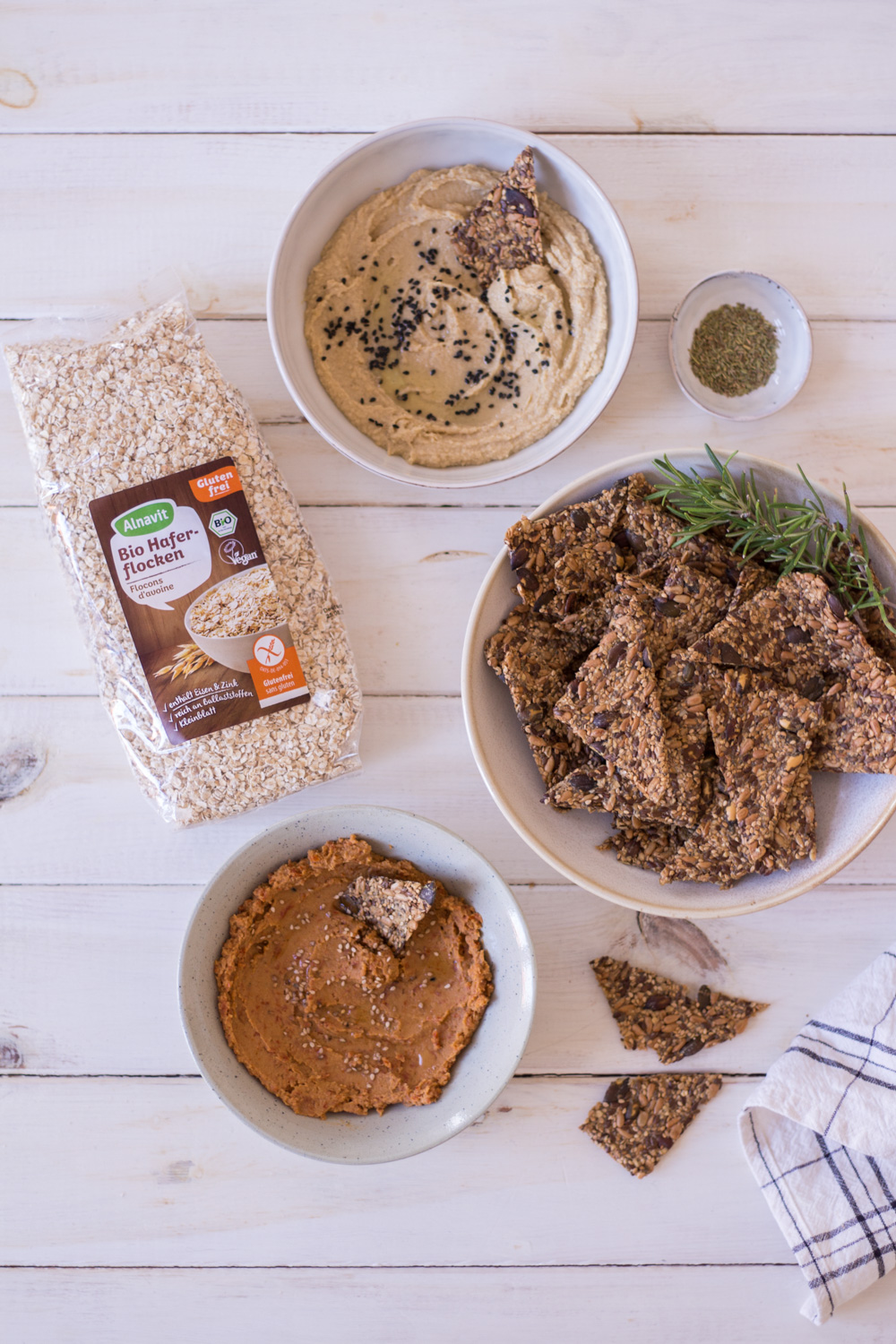
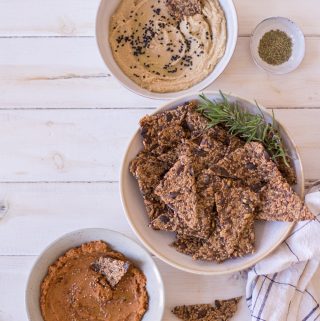
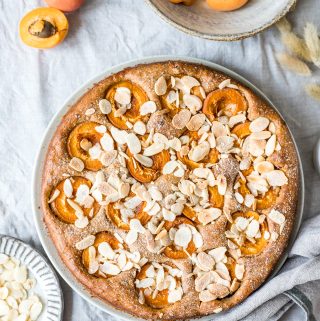
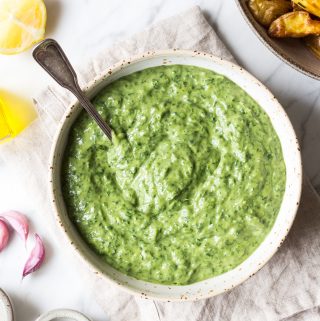
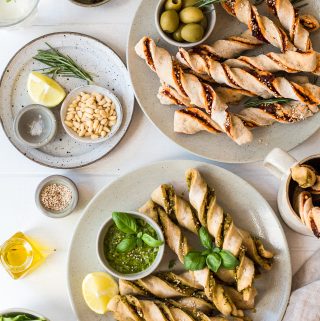
Leave a Reply